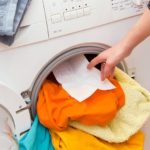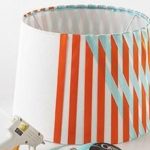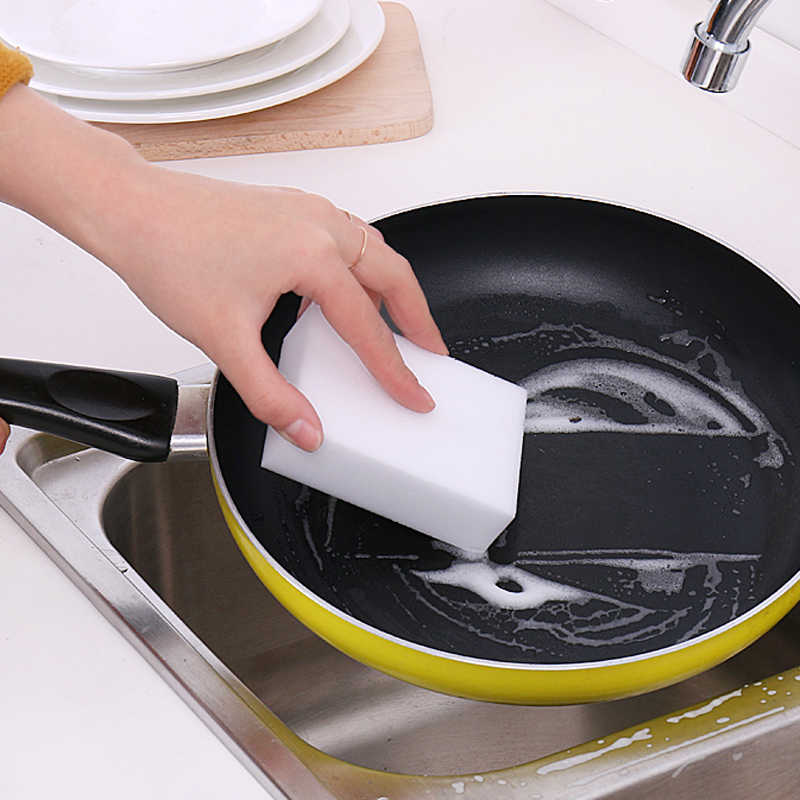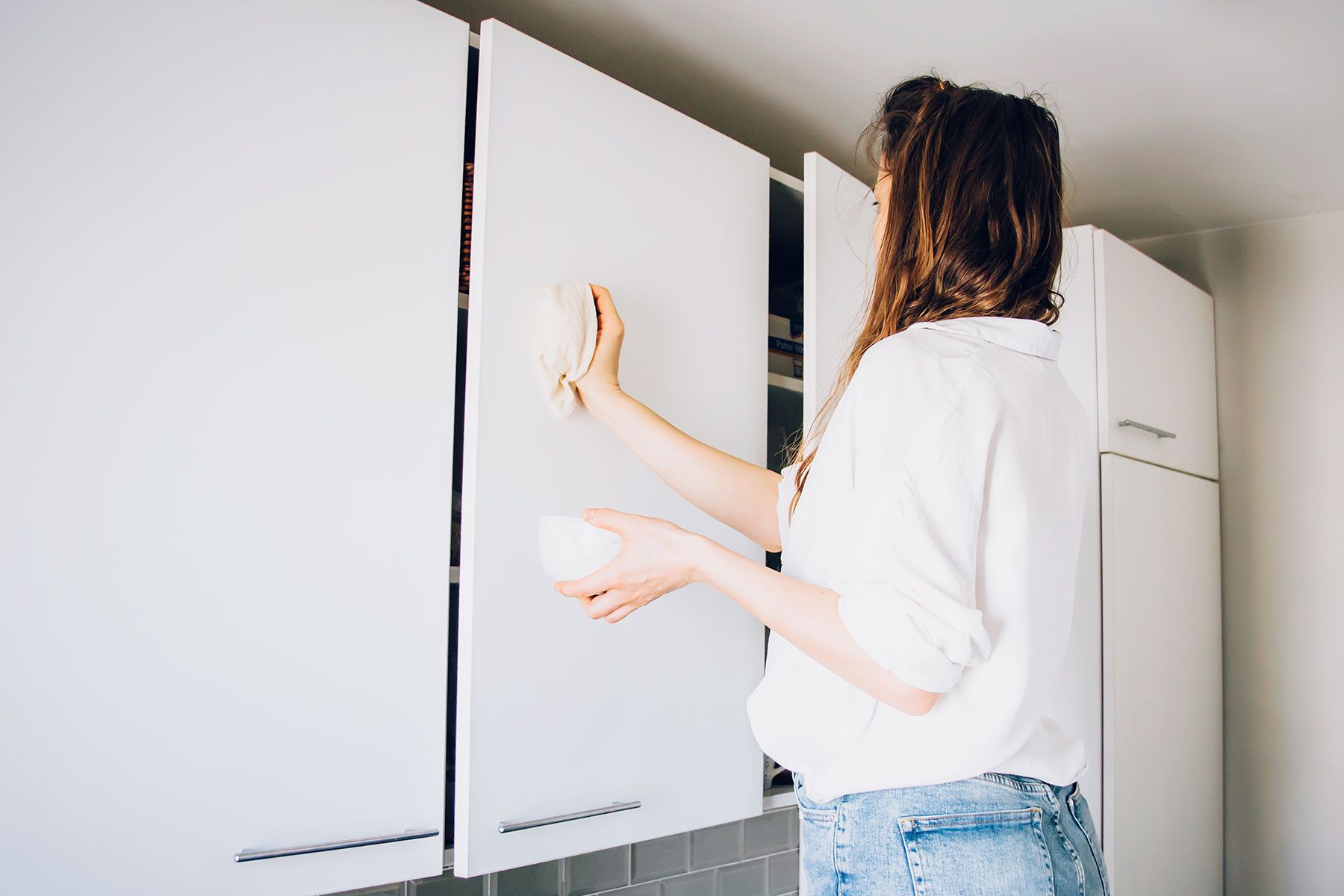How to starch a napkin?
Napkins skillfully crocheted or knitted are a beautiful decoration for a room. Such cute elements add coziness and warmth to the interior and add special accents. But it’s not enough to just knit a product; it’s important to care for it properly. One process that is recommended for knitted napkins is starching.
The content of the article
Why starch a napkin?
If you are at least a little familiar with knitting, then you probably know that during the process, threads can stretch and wrinkle. In order for the finished napkin to have an attractive appearance, become smooth and rigid, sometimes you can simply wash it, dry it properly and iron it.
After starching a knitted napkin, it is shaped into a bowl or basket and used for confectionery or decoration.
To achieve the ideal final result, the napkin needs to be starched, that is, treated with ordinary starch - this will help make the fabric tougher, protect it from dirt, and bleach the fibers. Starching will also give the napkins a more impressive look and allow you to fully demonstrate the pattern.
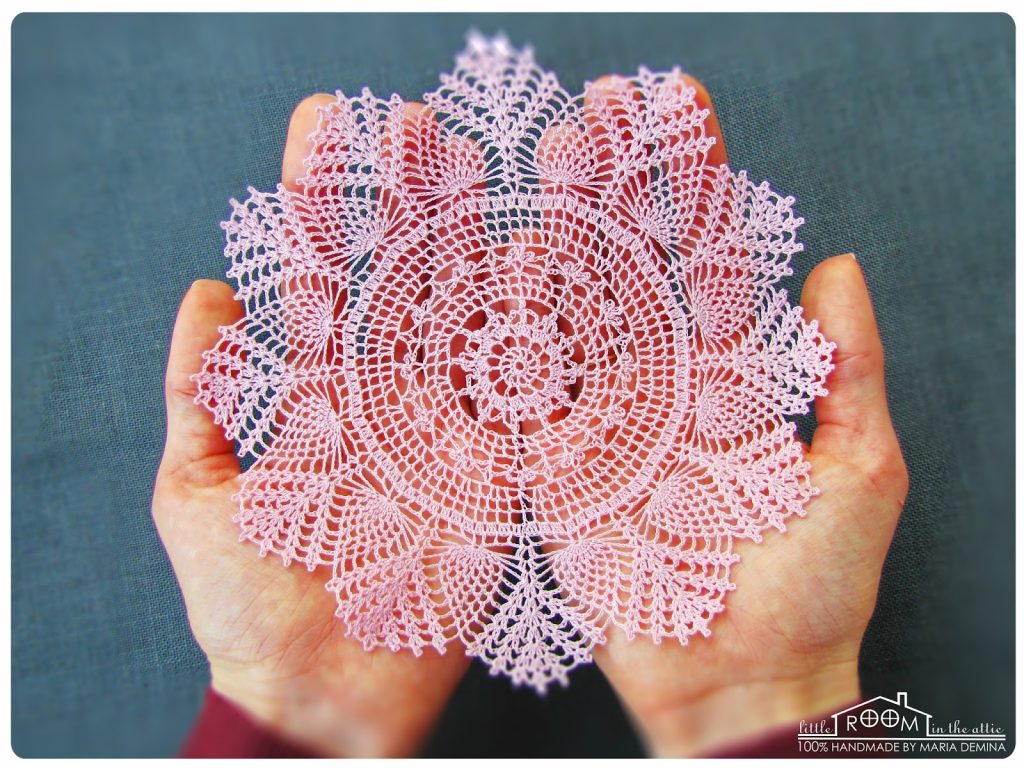
By the way, you can treat not only knitted napkins with starch, but also fabric ones intended for table setting. In this case, it will be more convenient for them to give the desired shape.
Classic method
This is the method that our grandmothers used. It is considered the easiest and most accessible.After using it, the napkin will keep its shape for a long time and retain its attractive appearance.
Concentration
In general, you can take different amounts of ingredients, depending on what result you want to get. If you need a rigid product, then the concentration of the composition will, of course, increase:
- Minimal effect. For 1 liter of water you need to take 1 teaspoon of starch. This solution is perfect for starching napkins if you don’t want the end result to be too harsh.
- Average. The amount of starch needs to be increased - 1 tablespoon of powder is already taken for 1 liter of water.
- Hard concentration involves 2 tbsp. l. starch per 1 liter of water. In this case, the napkin can be given any shape and it will stick. This method is specifically intended for voluminous products.
These recipes are based solely on potato starch. If you use another one, the amount of powder will increase.
Stages of preparing the solution
Correct diagram:
- Take two containers. Add starch and a small part of water to one of them. Mix until you get a slightly thick consistency. Make sure there are no lumps or any foreign inclusions.
- The remaining water is poured into the second container and put on fire. When the liquid boils, carefully and little by little pour it into the first container (where the starch is located).
- The resulting solution is placed on fire and brought to a boil. Remember to stir the contents constantly to prevent lumps from appearing.
- As soon as the mixture boils, remove the container from the heat and cool. The optimal temperature of the composition should not exceed 35°C.
The process itself
Starching a napkin is not such a difficult procedure, and even a teenager can cope with it:
- The prepared solution is poured into a wide container; it must be clean and dry.
- The napkin is immersed in the paste and wait until it is completely saturated.
- The product is kept in the composition depending on the thickness of the thread. For thin people - 8 minutes, medium - up to 15, thick - up to 35.
- Then the napkin is taken out of the solution, the excess liquid is carefully squeezed out and laid out on a flat surface.
Do not forget to straighten the product, giving it the desired shape. As soon as it dries a little, it needs to be ironed through gauze or a piece of cotton fabric. It is important to set the iron to the minimum setting.
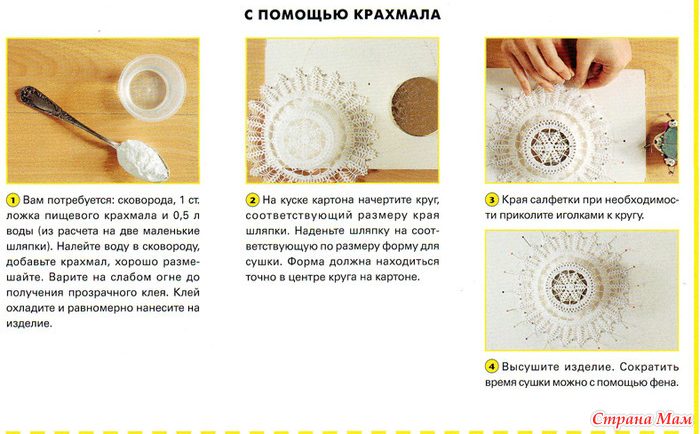
Other recipes
Starch is not the only ingredient that can be used to starch napkins.
Milk
For preparation - 0.5 liters of skim milk and 0.5 tbsp. l. rice starch. The scheme is similar to the classical method. But the time the napkin is kept in the solution increases to 20 minutes.
Dry method
If you are too lazy to bother with preparing liquid formulations, then you can use a simple dry method, but it similarly requires the presence of starch.
The napkin is laid out on a flat surface, having previously placed a clean sheet of paper under the bottom according to the size of the product. Then it should be generously sprinkled with starch and moistened with clean water using a spray bottle. Cover with another sheet and leave to dry. Then you just need to shake off the remaining powder.
Sugar
This method is ideal when the product needs to be given some unusual shape. For example, in the form of a plate. For this:
- Dissolve 150 grams of sugar in 1 liter of warm water.
- Then you need to cook the syrup with constant stirring. A good indicator is that the contents will be a light chocolate color.
- In a separate container, 1 teaspoon of starch is mixed with a small amount of water.
- Both compositions are carefully combined, pouring the second into the first, stirring constantly.
- When the contents have cooled, a napkin is immersed in it. Exposure time is about 15-20 minutes.
- Then the product is squeezed out, given the desired shape and sent for drying.
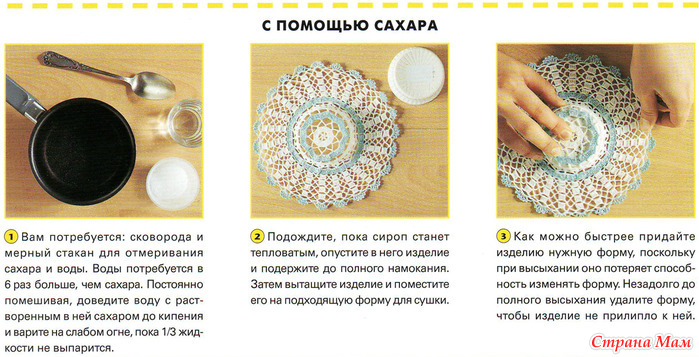
PVA glue
Another simple way. Recipe for preparing the solution:
- Dilute 100 ml of glue in 1 liter of water;
- immerse the napkin and leave for 15 minutes;
- then gently squeeze;
- give the required shape and dry.
Aerosol
A convenient way, although not the cheapest. Special products are purchased at household chemical stores. They are intended for starching napkins. However, if we compare the aerosol with traditional recipes, the latest options have shown better effectiveness. The product will hold its shape worse even with a generous coating of aerosol.
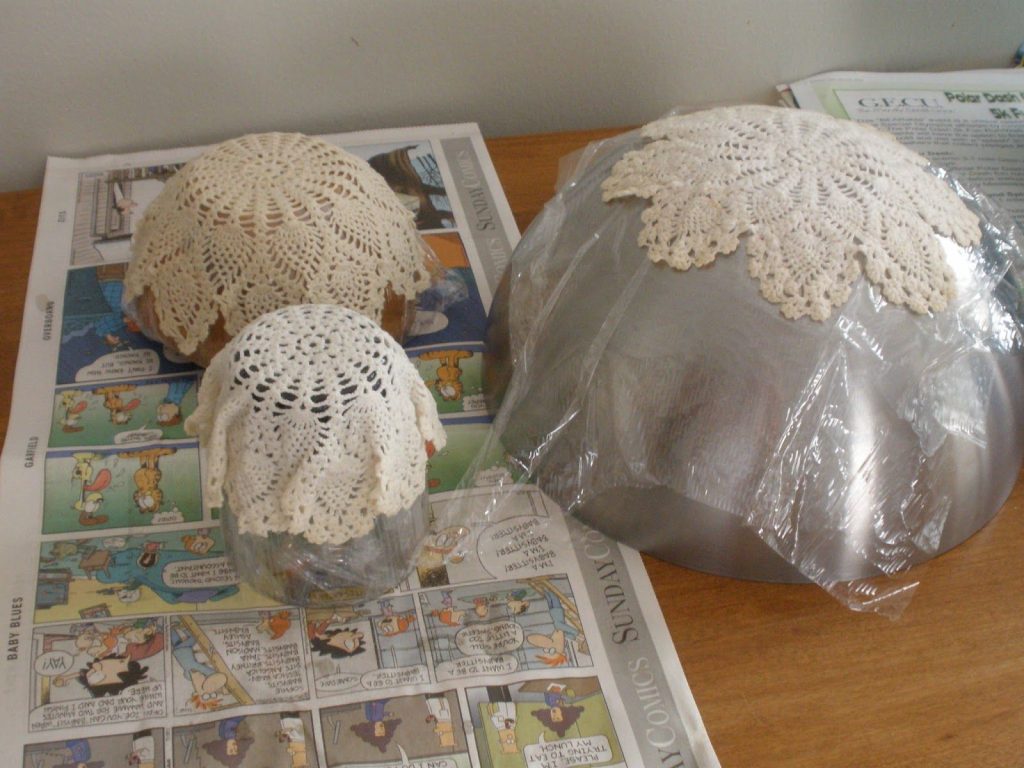
As you can see, there are ways to starch napkin quite a few, and they all show good results. Of course, over time the effect will disappear, but then it will be possible to wash the product and perform a similar procedure so that it continues to please with its attractive appearance.

